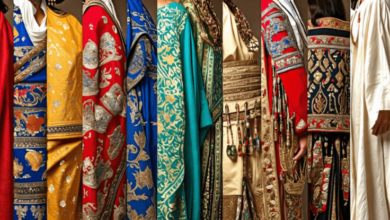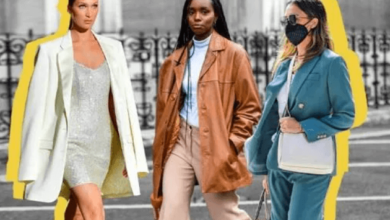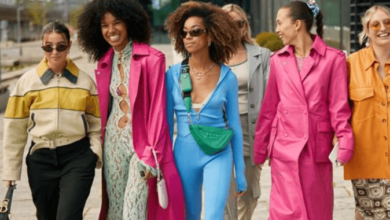
Sustainable Fashion: How Eco-Friendly Materials are Reshaping the Industry
Sustainable fashion has emerged as a vital movement in response to the environmental and ethical challenges posed by the traditional fashion industry. This revolution emphasizes eco-friendly materials, ethical labor practices, and reducing waste, thereby redefining how we perceive style and innovation. As more consumers demand accountability and sustainability, the fashion industry is undergoing a transformative shift.
What is Sustainable Fashion?
Sustainable fashion focuses on producing garments with minimal environmental impact. It prioritizes renewable resources, reduces waste, and supports ethical labor practices. This movement challenges the “fast fashion” model, which often relies on cheap materials and exploitative production methods. By embracing sustainability, the fashion industry aims to strike a balance between aesthetics and environmental responsibility.
The Rise of Eco-Friendly Materials in Fashion
Eco-friendly materials are the cornerstone of sustainable fashion. These materials are sourced responsibly, biodegradable, or recycled, ensuring minimal harm to the planet. Some popular examples include organic cotton, hemp, bamboo, recycled polyester, and innovative alternatives like mushroom leather and lab-grown fabrics. These materials not only reduce the industry’s carbon footprint but also inspire creativity and innovation in design.
Organic cotton, for instance, is grown without harmful pesticides and uses significantly less water than conventional cotton. Bamboo, a rapidly renewable resource, is another favorite due to its softness and versatility. Recycled polyester gives new life to discarded plastic, turning waste into fashion-forward garments. The development of lab-grown leather and bio-fabrics is pushing the boundaries of what sustainable fashion can achieve.
Why Eco-Friendly Materials Matter
The production and disposal of traditional textiles contribute heavily to pollution, waste, and greenhouse gas emissions. Conventional cotton farming requires extensive water and pesticides, while synthetic fabrics like polyester shed microplastics into water systems during washing. Eco-friendly materials tackle these issues head-on. By using organic and renewable resources, they reduce dependency on non-renewable energy, minimize waste, and lessen the strain on natural ecosystems.
Eco-friendly materials also promote ethical practices in farming and manufacturing. Farmers growing organic crops often work under better conditions and are paid fair wages. Moreover, sustainable practices encourage transparency in the supply chain, fostering trust between brands and consumers.
The Role of Innovation in Sustainable Fashion
Technological advancements are driving the sustainable fashion movement. Companies are investing in research to create innovative materials that are both eco-friendly and functional. Lab-grown leather, for example, mimics the texture and durability of animal leather without involving animals. Algae-based fabrics and biodegradable synthetic alternatives are also gaining popularity.
Fashion brands are adopting circular design principles to ensure that clothing can be reused, repaired, or recycled. This approach challenges the linear “take-make-waste” model by designing products that have a longer life cycle and create less waste.
Consumer Demand for Sustainable Practices
Consumers today are more conscious of the impact of their choices on the environment. This awareness has led to a surge in demand for sustainable fashion. People want to support brands that align with their values and contribute positively to the planet. Eco-conscious shoppers prioritize quality over quantity, investing in timeless, durable pieces rather than chasing fleeting trends.
The shift in consumer mindset has forced brands to adapt. Many companies now highlight their use of eco-friendly materials and ethical practices as a key selling point. Transparency in sourcing and production is becoming a crucial factor for consumers, with many willing to pay a premium for sustainably made clothing.
Challenges in Adopting Sustainable Fashion
Despite its benefits, sustainable fashion faces challenges. Eco-friendly materials can be more expensive to produce, making sustainable garments costlier than fast fashion alternatives. Limited consumer awareness about the environmental impact of traditional textiles also poses a hurdle. Additionally, transitioning to sustainable practices requires significant investment and innovation, which smaller brands may find difficult to afford.
Another challenge lies in greenwashing, where brands falsely market their products as sustainable. This practice misleads consumers and undermines the genuine efforts of ethical companies. Educating consumers to discern true sustainability from marketing gimmicks is essential to the movement’s success.
The Environmental and Ethical Benefits of Sustainable Fashion
Sustainable fashion brings numerous environmental benefits. By reducing reliance on harmful chemicals and non-renewable resources, it helps protect natural habitats and biodiversity. Lower water consumption and reduced emissions contribute to mitigating climate change. Furthermore, recycling and repurposing materials help address the growing issue of textile waste in landfills.
From an ethical perspective, sustainable fashion promotes fair labor practices and ensures safe working conditions for workers. It aims to eliminate exploitation and create a more equitable industry where both people and the planet thrive.
Popular Brands Leading the Sustainable Fashion Movement
Several fashion brands have embraced sustainability and eco-friendly materials. Stella McCartney, a pioneer in ethical luxury, uses innovative materials like mushroom leather and recycled fabrics in her collections. Patagonia, known for its outdoor apparel, emphasizes durability, repairability, and environmental stewardship. Everlane, another prominent brand, is transparent about its factories, materials, and costs, making sustainability accessible and stylish.
H&M’s Conscious Collection and Zara’s Join Life initiative represent fast fashion’s attempt to incorporate sustainable practices. These efforts signal a broader industry shift, even among companies traditionally associated with unsustainable models.
How Consumers Can Support Sustainable Fashion
Consumers play a vital role in promoting sustainable fashion. Building a capsule wardrobe with versatile, high-quality pieces reduces the need for frequent purchases. Choosing brands that prioritize eco-friendly materials and ethical practices supports the movement. Additionally, consumers can repair and recycle old clothing instead of discarding it.
Second-hand shopping and clothing swaps are also excellent ways to reduce waste while finding unique fashion pieces. By adopting mindful shopping habits, individuals contribute to a more sustainable future.
The Future of Sustainable Fashion
As innovation continues, the future of sustainable fashion looks promising. The development of biodegradable textiles and closed-loop systems will further reduce environmental impact. Increased collaboration between governments, organizations, and brands can promote industry-wide changes and set new standards for sustainability.
The integration of digital tools like blockchain can enhance supply chain transparency, enabling consumers to trace the journey of their clothing from farm to closet. Education and awareness campaigns will continue to empower consumers to make informed choices.
Conclusion
Sustainable fashion is more than a trend; it is a transformative movement reshaping the industry. By prioritizing eco-friendly materials and ethical practices, the fashion world is stepping up to address environmental challenges. From innovative fabrics to mindful consumer behavior, every effort counts toward creating a more sustainable future. As consumers and brands work together, sustainable fashion has the potential to redefine style in harmony with the planet.




